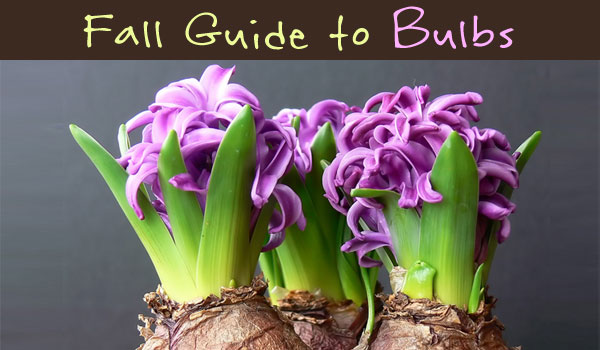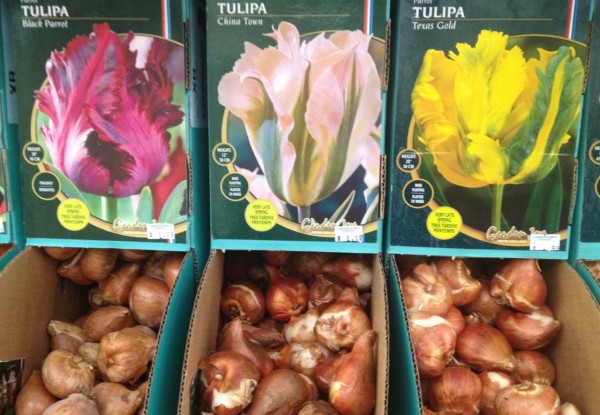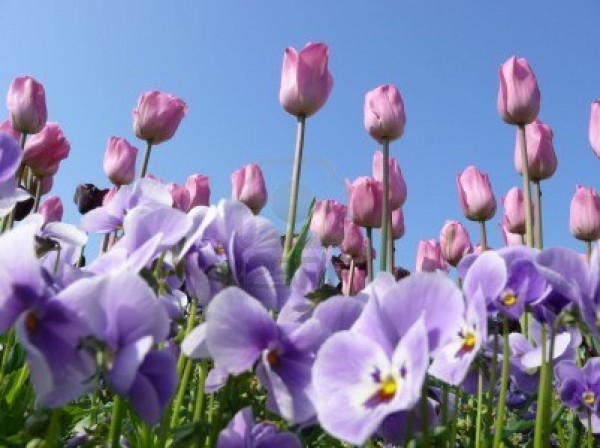Gardening: Fall Guide to Bulbs
Story by Lindsey Chester. Photo by Teresa Aragó
Cary, NC – The weather is turning cooler and that means its time to hide some buried treasures in your garden years of early spring color.
Fall Guide to Bulbs
My favorite thing about flowering bulbs is that you plant them once, and they return year after year and require very little work, other than the occasional sprinkle of some time released fertilizer.
The bulbs to plant in the fall are bulbs which will flower in the spring. These bulbs are hardy and will produce – even increase – for years to come.
Plant Now Through Thanksgiving
Because our climate is mild here in the Piedmont, and the soil doesn’t freeze, you can plant your bulbs through Thanksgiving. But the later you plant, the later they will come up. Many bulbs won’t develop their root systems until Spring.
My Favorites
My favorites include hyacinths, daffodils and irises, because they require very little care and don’t attract the appetites of deer or rabbits.
Tulips can be temperamental here, preferring cooler winters. Many gardeners treat them as annuals in Cary, either digging them up at the end of the season, or over-planting after they have lost their blooms.
Picking a Good Bulb
Look for a meaty bulb that does not have any soft spots or cuts. There should be a distinct root end and a shoot end. Stores that offer loose bulbs are your best bet because the customer can pick each bulb individually and the product tends to be bigger and healthier than those purchased in bulk.
Rhizomes , like irises, are slightly different – think of ginger root in the grocery store. The shape is irregular, with several shoots popping out at different angles. Again you want the skin intact and the bulb to be firm and free of rot, or insects.
Pick Your Spot
Bulbs like full sun, so watch your yard and plan a place that receives at least 6 hours of direct sunlight. Bulbs also don’t like wet feet, so be sure the area is well drained.
Plant Your Bulbs
You will need some tools:
- A bulb digger (it looks cylindrical with chunky teeth on one end and a firm handle on the other
- a garden hose
- some bulb fertilizer
- a bag of garden soil
I usually rough up the area I am about to dig with a garden fork or shovel to loosen the soil prior to digging my holes.
Plan of Attack
Bulbs need to be dug in vertical holes. Look at the area you plan to plant, on the soil surface arrange your bulbs until they are evenly spaced in a pleasing arrangement.
If you are planting a mix, place taller species toward the back of the bed, and shorter plants in front. Or think about a succession of earlier plants going behind later bloomers, so they may be hidden by newer foliage.
Dig the Holes
Bigger bulbs need deeper holes. Here’s a rule of thumb: Generally, dig a hole two to three times deeper than the bulb is tall. There are always exceptions, so check the planting directions that come with the bulbs for more information. For instance, a daffodil bulb of 3″ high needs a hole about 6″ deep and will grow to about 12″ tall. Tulips need at least 8″. But hyacinths only need about 4″-6″. Small grape hyacinth bulbs only need 3-4″.
- With the bulb digger, plunge into the soil and twist. This will remove a large plug of dirt. Make sure it is deep enough for the bulb you have chosen.
- Place your bulb at the bottom of the hole, with the point facing up, and root down. sprinkle some fertilizer in the hole, some of the good garden soil and mix with the existing soil you dug from the hole to fully cover your bulb.
Continue in this fashion until you have planted all your bulbs. Now get out the hose and give the entire area a nice soaking. Add a layer of mulch over the top to keep the area well moistened and full of nutrients over the winter.
Mark Your Spot
You may want to mark where you have planted these babies so that come spring, you don’t accidentally dig them up when you are planting your Spring annuals. A popsicle stick works well as a marker.
Most flowering bulbs begin to poke through the soil in late December, early January. Daffodils generally will start to flower by the last week in February and hyacinths come up in early March. If you planted them in late November those dates may be a little later. Tiny crocuses can come out in January.
Some Favorite Combinations
A favorite combination produced by landscapers in this area are colorful tulips planted underneath annual pansies. The time to plant this combination is now as pansies need a chance to develop roots before the temps really drop at night.
To do this arrangement dig up a whole area to a depth of about 6″ and amend the soil. Place your tulips in the areas you wish. Then cover with about 3″ of soil. arrange the pansies scattered over the planted tulips. Fill in the balance of the amended soil and fill in. Water the whole area fully. The pansies will require more care than the bulbs – if the season is dry, the pansies will need to be watered.
If you want to hide dying foliage from one set of bulbs, here’s a trick I use. I plant Stella D’Oro daylilies in front of my daffodil bulbs. By the time the daffodils are dying back, my day lilies’ leaves are high enough to hide them.
Tips to Keep Bulbs Healthy for Many Years
After the plants have flowered DO NOT cut back the foliage! The dying leaves serve as essential nutrients to feed the bulb and help it grow. What to do with those ugly dying leaves? Here’s a trick I learned years ago: Tie up the leaves or braid them like you would a length of hair.
Wait a week or two after the blooms are gone, the leaves will be a little wilted and pliable. Separate the stalks and leaves into three bunches and braid them. They actually look pretty good and will stay braided until all the leaves brown and die off.
Another tip: I use Osmocote pellets to sprinkle over the bulb bed after everything has died off to add some more nutrients. I do this again in the spring as the foliage starts to appear.
Your bulbs will thank you the following year with healthy blooms.
What Are Your Favorites?
What are your favorite spring flowering bulbs to plant now in Cary? Please share your knowledge in the comments.
—————————————————————————————————————-
The Gardening Column on CaryCitizen is sponsored by Garden Supply Company on Old Apex Road in Cary.





